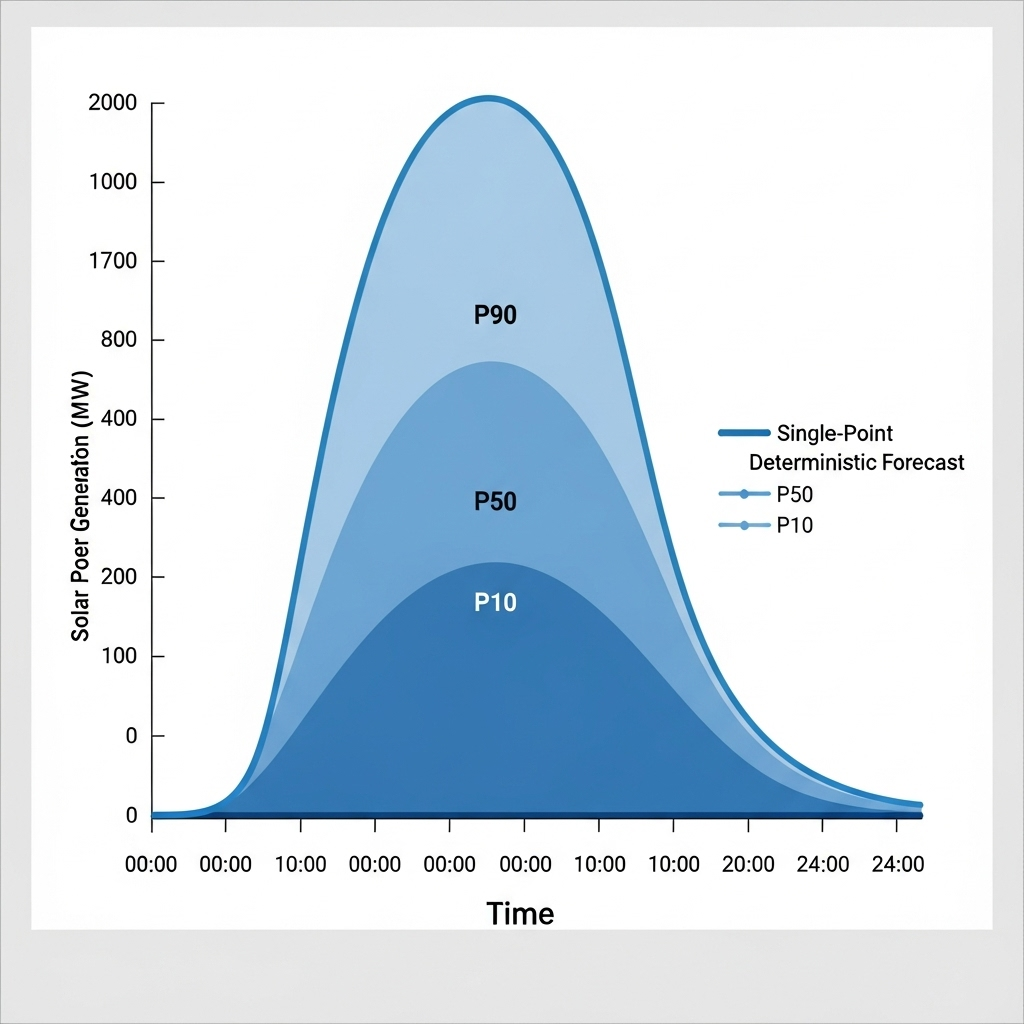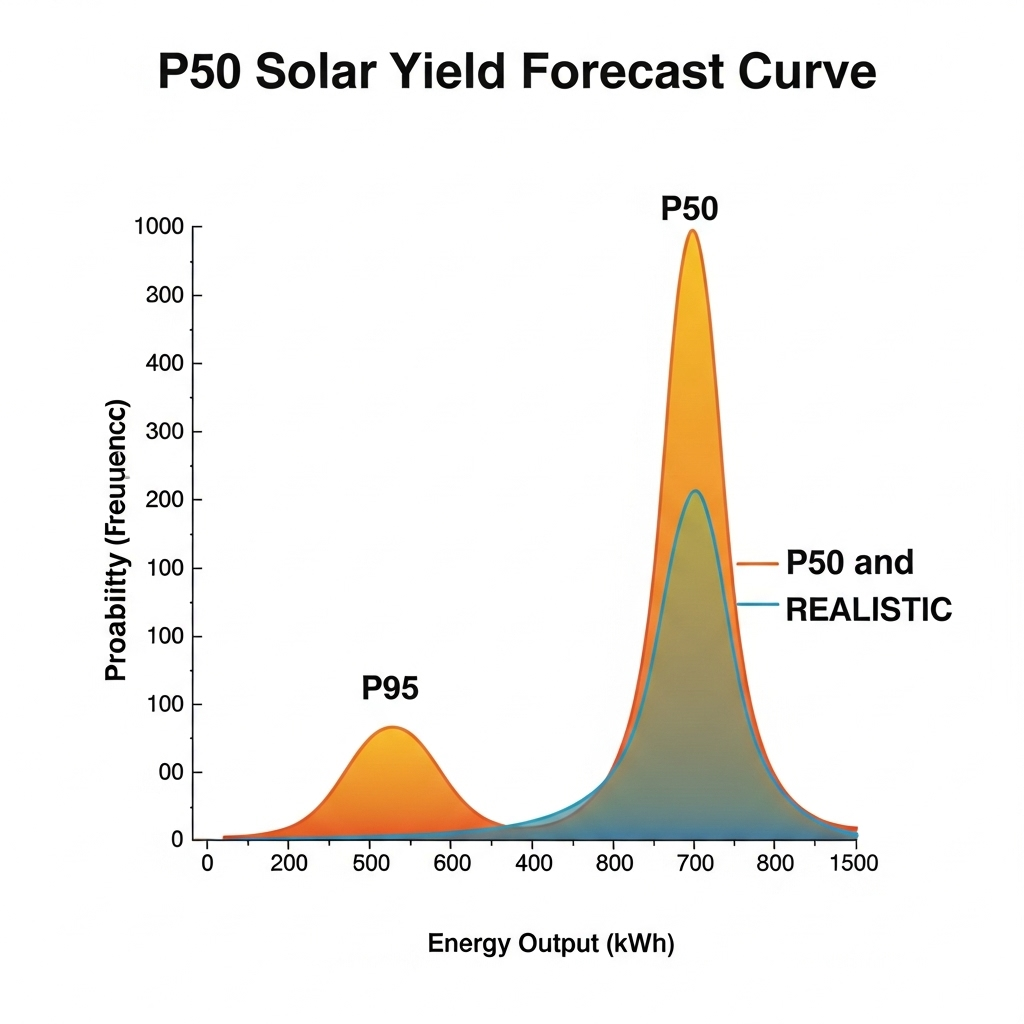Your solar panels are generating clean power, but the grid cannot always accept it. This frustrating reality is called curtailment, where potential energy and revenue are simply lost. Traditional forecasting methods often fall short, leaving operators to make conservative decisions that lead to more curtailment. Fortunately, a more intelligent approach exists. Probabilistic forecasting provides the data-driven insight needed to anticipate and manage oversupply, turning potential losses into real gains. This method helps you optimize your solar and storage assets for maximum performance and profitability.
The Challenge of Solar Curtailment
Curtailment is a growing concern for solar asset owners and grid operators alike. It represents a direct loss of clean energy. Understanding its causes and the limitations of conventional prediction tools is the first step toward solving the problem.
What is Curtailment and Why Does It Happen?
Curtailment is the intentional reduction of energy output from a generator, in this case, a solar PV system. It happens for several reasons:
- Grid Congestion: The transmission and distribution lines lack the capacity to carry the amount of power being generated, similar to a traffic jam on a highway.
- Oversupply: On sunny, cool days with low energy demand, the total amount of power generated from all sources can exceed the grid's needs. To maintain stability, operators must 'curtail' some generators.
- System Maintenance: Planned or unplanned maintenance on the grid can temporarily reduce its ability to accept power.
Regardless of the cause, the result is the same: wasted energy and reduced return on investment for the solar asset owner.
The Limits of Deterministic Forecasts
For years, grid operators have relied on deterministic forecasts. These models provide a single, 'best guess' prediction of solar output for a specific time. For example, a forecast might predict 100 MW of output at 1 PM. While simple, this approach has a major flaw: it fails to communicate any sense of uncertainty. Was that 100 MW a near-certainty, or just the most likely outcome among a wide range of possibilities? A deterministic forecast cannot tell you. This lack of information forces operators to plan conservatively, often holding back other generators or curtailing solar 'just in case' the forecast is wrong. This creates inefficiency and unnecessary costs.
A Smarter Approach: Probabilistic Forecasting
Probabilistic forecasting moves beyond a single number to provide a full spectrum of potential outcomes. This empowers operators with the information they need to make smarter, more nuanced decisions.
Moving Beyond a Single Number
Instead of one prediction, a probabilistic forecast offers a range of possibilities and their likelihoods. You might see terms like P50 and P90. A P50 forecast represents a median scenario; there is a 50% chance that actual production will be higher or lower. A P90 forecast is more conservative, indicating a 90% probability that production will meet or exceed that level. This range gives a clear picture of the potential for both underproduction and overproduction, which is critical for curtailment reduction.
How Probabilistic Models Work
These advanced models analyze multiple data streams to generate their predictions. Inputs include historical weather patterns, real-time satellite imagery tracking cloud cover, and live performance data from the solar array itself. As the International Energy Agency's report, The Power of Transformation, highlights, solar PV power forecasts have become more sophisticated, though rare events like heavy fog can still pose challenges. Probabilistic methods are designed to quantify these very uncertainties, giving operators a clear-eyed view of potential risks and opportunities.
From Theory to Action: Reducing Curtailment with Probabilistic Data
Armed with a probabilistic forecast, you can shift from a reactive to a proactive strategy. This data unlocks new ways to manage energy storage, participate in energy markets, and schedule maintenance.
Optimizing Energy Storage Dispatch
This is where probabilistic forecasts truly shine. If the forecast shows a high probability of oversupply during midday hours, you can strategically prepare your energy storage system. For example, an operator can discharge a LiFePO4 battery in the morning to serve the early peak, creating empty capacity to absorb the excess solar energy that would otherwise be curtailed. This captured energy can then be sold back to the grid during the evening peak, turning a potential loss into a new revenue stream. Optimizing these charge cycles is vital for battery health and profitability, a topic covered in depth in this ultimate reference on solar storage performance.
Informed Grid Operations and Market Bidding
Probabilistic forecasts enable more efficient grid-wide planning. As detailed in an IEA analysis, Harnessing Variable Renewables, system operators in countries like Spain already use 48-hour ahead probabilistic forecasts to calculate necessary energy reserves. This allows them to commit the right amount of resources without being overly cautious. For asset owners, this data provides a competitive edge in energy markets. Knowing the likelihood of high production allows for more confident and profitable bidding strategies.
| Scenario | Deterministic Approach | Probabilistic Approach | Outcome |
|---|---|---|---|
| Forecast: High-Sun Day | Assumes high output. Risks curtailment if demand is low. | Shows a 75% chance of oversupply. Pre-discharges battery to capture excess midday energy. | Curtailment avoided; excess energy sold later for profit. |
| Forecast: Partly Cloudy Day | Predicts a single, mediocre output. Plans conservatively. | Shows a P90 (low) and P10 (high) range. Plans for the P50 median but has storage ready for upside. | Maximizes energy capture during sunny periods; avoids financial penalties for under-delivery. |
| System Maintenance | Schedules based on convenience, potentially causing high revenue loss. | Identifies a future week with a high probability of low irradiance. | Maintenance is scheduled during a low-production period, minimizing financial impact. |
Proactive Maintenance Scheduling
Why shut down your system for maintenance on a perfect, sunny day? Probabilistic forecasts can predict periods of low generation days or even weeks in advance. By scheduling routine maintenance during these times, you minimize lost production and ensure your system is available when generation potential is highest.
The Tangible Benefits of Better Forecasting
Adopting probabilistic forecasting is not just a technical upgrade; it delivers significant financial and operational advantages that strengthen the entire energy ecosystem.
Maximizing Revenue and Asset Value
The primary benefit is financial. Every kilowatt-hour of energy you save from curtailment and sell to the grid is additional revenue. By optimizing the use of your solar panels and energy storage, you increase the overall utilization rate of your assets. This improves the project's return on investment and makes solar a more bankable and attractive technology.
Enhancing Grid Stability
Better forecasting contributes to a more stable and reliable grid for everyone. When grid operators have a clearer picture of incoming variable generation, they can manage resources more efficiently. An IEA study cited in Harnessing Variable Renewables found that significant improvements in forecasting could reduce grid balancing costs by 30% to 40%. This reduces the need for expensive, fossil-fuel-powered spinning reserves, leading to a cleaner and more cost-effective energy system.
Moving Toward Intelligent Energy Management
The era of relying on a single 'best guess' for solar forecasting is ending. Probabilistic forecasting provides the nuanced, data-rich insights required to manage the complexities of modern energy systems. By quantifying uncertainty, these tools empower solar and storage asset owners to move from reactive damage control to proactive optimization. Reducing curtailment is no longer a matter of guesswork. It is a strategic decision enabled by better data, smarter software, and a forward-thinking approach to energy management. Embracing this technology is a critical step in unlocking the full value of your solar investments.
Frequently Asked Questions
What is the difference between a P50 and a P90 forecast?
A P50 forecast is a median estimate, meaning there is a 50% chance the actual energy production will be higher and a 50% chance it will be lower. It represents an average expectation. A P90 forecast is a more conservative, high-confidence estimate. It means there is a 90% probability that the actual production will be at least this level. P90 forecasts are often used for risk-averse planning to ensure reliability.
Are probabilistic forecasts only for large-scale solar farms?
While they are essential for utility-scale operations, the principles of probabilistic forecasting are valuable for smaller systems too, especially those with energy storage. A homeowner with a solar and battery system can use simpler probabilistic data (like a weather forecast giving a 'percent chance of sun') to decide whether to pre-charge their battery from the grid overnight in anticipation of a cloudy day.
How much can probabilistic forecasting really reduce curtailment?
The reduction varies based on grid conditions, market rules, and the size of the solar asset. However, studies and real-world applications have shown significant potential. By enabling optimized battery dispatch and more accurate market bidding, reductions in curtailment can range from a few percent to over 50% in congested areas, directly boosting a project's revenue.





Leave a comment
All comments are moderated before being published.
This site is protected by hCaptcha and the hCaptcha Privacy Policy and Terms of Service apply.